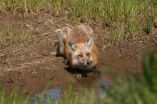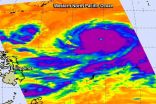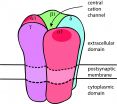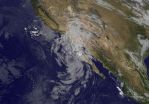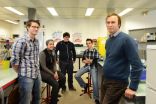(Press-News.org) Imagine attempting to trace your genetic history using only information from your mother's side. That's what scientists studying the evolution of the red fox had been doing for decades.
Now, University of California, Davis, researchers have for the first time investigated ancestry across the red fox genome, including the Y chromosome, or paternal line. The data, compiled for over 1,000 individuals from all over the world, expose some surprises about the origins, journey and evolution of the red fox, the world's most widely distributed land carnivore.
"The genome and the information it contains about our ancestry and evolution is huge," said lead author Mark Statham, an assistant project scientist with the UC Davis Veterinary Genetics Laboratory. "If you're only looking at what your mother's mother's mother did, you're only getting a small portion of the story."
The study, published in the latest issue of the journal Molecular Ecology, represents the most globally comprehensive work yet on the red fox.
Conventional thinking based on maternal genetics suggested that red foxes of Eurasia and North America composed a single interconnected population across the Bering land bridge between Asia and Alaska. In contrast, this new research shows that the red foxes of North America and Eurasia have been almost entirely reproductively isolated from one another for roughly 400,000 years. During this time, the North American red fox evolved into a new species distinct from its Old World ancestors.
The previous view was distorted by the maternal picture because a single female line transferred from Asia to Alaska about 50,000 years ago.
The new genetic research further suggests that the first red foxes originated in the Middle East before beginning their journey of colonization across Eurasia to Siberia, across the Bering Strait and into North America, where they eventually founded the North American population.
"That small group that got across the Bering Strait went on to colonize a whole continent and are on their own evolutionary path," Statham said.
During the red foxes' journey over millennia, ice sheet formation and fluctuating temperatures and sea levels offered periods of isolation and reconnection, impacting their global distribution. Statham said understanding the evolutionary history of the red fox can provide insight into how other species may have responded to climate change and those same environmental shifts.
INFORMATION:
The research effort, headed by Statham and Ben Sacks, associate adjunct professor and director of the UC Davis Mammalian Ecology and Conservation Unit, involved a network of collaborators and contributors from around the world and relied heavily on specimens in natural history museums.
The study received primary funding from the Systematic Research Fund through the Systematics Association of the Linnean Society of London and the Veterinary Genetics Laboratory at UC Davis.
Read the full study: http://onlinelibrary.wiley.com/doi/10.1111/mec.12898/abstract
About UC Davis
UC Davis is a global community of individuals united to better humanity and our natural world while seeking solutions to some of our most pressing challenges. Located near the California state capital, UC Davis has more than 34,000 students, and the full-time equivalent of 4,100 faculty and other academics and 17,400 staff. The campus has an annual research budget of over $750 million, a comprehensive health system and about two dozen specialized research centers. The university offers interdisciplinary graduate study and 99 undergraduate majors in four colleges and six professional schools.
Around the world in 400,000 years: The journey of the red fox
2014-10-07
ELSE PRESS RELEASES FROM THIS DATE:
NASA eyes Super typhoon Vongfong
2014-10-07
Typhoon Vongfong strengthened into a Super typhoon on Tuesday, October 7 as NASA's Aqua satellite passed overhead.
On Oct. 7 at 0429 UTC (12:29 a.m. EDT) the Atmospheric Infrared Sounder called AIRS that flies aboard NASA's Aqua satellite captured cloud top temperature data on Super typhoon Vongfong. AIRS data very strong thunderstorms circling Vongfong's clear 27 nautical-mile wide eye. Those cloud top temperatures were colder than -62F/-53C indicating that they were high in the troposphere and capable of generating heavy rainfall. The bands of thunderstorms circling ...
Very low concentrations of heavy metals and antibiotics contribute to resistance
2014-10-07
New Swedish research shows that plasmids containing genes that confer resistance to antibiotics can be enriched by very low concentrations of antibiotics and heavy metals. These results strengthen the suspicion that the antibiotic residues and heavy metals (such as arsenic, silver and copper) that are spread in the environment are contributing to the problems of resistance. These findings have now been published in the highly regarded journal mBio.
Antibiotic resistance is a growing medical problem that threatens human health worldwide. Why and how these resistant bacteria ...
Efficacy of potential therapy for autoimmune disorder of muscle weakness
2014-10-07
PHILADELPHIA — Nearly 60,000 Americans suffer from myasthenia gravis (MG), a non-inherited autoimmune form of muscle weakness. The disease has no cure, and the primary treatments are nonspecific immunosuppressants and inhibitors of the enzyme cholinesterase.
Now, a pair of researchers from the Perelman School of Medicine at the University of Pennsylvania have developed a fast-acting "vaccine" that can reverse the course of the disease in rats, and, they hope, in humans. Jon Lindstrom, PhD, a Trustee Professor in the department of Neuroscience led the study, published ...
Advocating weight diversity
2014-10-07
A new review of the way health care professionals emphasise weight to define health and wellbeing suggests the approach could be harmful to patients.
Author of the review article, Dr Rachel Calogero of the School of Psychology at the University of Kent, together with experts from other institutions and organisations, recommends that this approach, known as 'weight-normative', is replaced by health care professionals, public health officials and policy-makers with a 'weight-inclusive' approach.
Weight-inclusive approaches, such as the Health At Every Size initiative, ...
Hospitalized patients don't wash their hands enough, study finds
2014-10-07
Hamilton, ON (October 7, 2014) – Hospital visitors and staff are greeted with hand sanitizer dispensers in the lobby, by the elevators and outside rooms as reminders to wash their hands to stop infections, but just how clean are patients' hands?
A study led by McMaster University researcher Dr. Jocelyn Srigley has found that hospitalized patients wash their hands infrequently. They wash about 30 per cent of the time while in the washroom, 40 per cent during meal times, and only three per cent of the time when using the kitchens on their units. Hand hygiene rates ...
Probiotic yogurt could help protect against heavy metal poisoning
2014-10-07
LONDON, ON – New research shows probiotic yogurt can reduce the uptake of certain heavy metals and environmental toxins by up to 78% in pregnant women. Led by Scientists at Lawson Health Research Institute's Canadian Centre for Human Microbiome and Probiotic Research, this study provides the first clinical evidence that a probiotic yogurt can be used to reduce the deadly health risks associated with mercury and arsenic.
Environmental toxins like mercury and arsenic are commonly found in drinking water and food products, especially fish. These contaminants are particularly ...
The 'cyberwar' against cancer gets a boost from intelligent nanocarriers
2014-10-07
Two years ago, Prof. Eshel Ben-Jacob of Tel Aviv University's School of Physics and Astronomy and Rice University's Center for Theoretical Biological Physics made the startling discovery that cancer, like an enemy hacker in cyberspace, targets the body's communication network to inflict widespread damage on the entire system. Cancer, he found, possessed special traits for cooperative behavior and used intricate communication to distribute tasks, share resources, and make decisions.
In research published in the Early Edition of the Proceedings of the National Academy of ...
Satellite sees Tropical Storm Simon over Baja California
2014-10-07
NOAA's GOES-West satellite took a picture of Tropical Storm Simon weakening over Mexico's Baja California.
On Oct. 7, a Tropical Storm Watch was in effect for Punta Abreojos to Punta Eugenia, Mexico. The National Hurricane Center expects Simon to produce storm total rainfall amounts of 3 to 5 inches with isolated amounts around 8 inches through Wednesday, Oct. 8, across northern portions of the Baja California Peninsula and the state of Sonora in northwestern Mexico. Over the next few days, storm total rainfall amounts of 1 to 2 inches with isolated amounts of around ...
Anorexia/bulimia: A bacterial protein implicated
2014-10-07
Eating disorders (ED) such as anorexia nervosa, bulimia, and binge eating disorder affect approximately 5-10% of the general population, but the biological mechanisms involved are unknown. Researchers at Inserm Unit 1073, "Nutrition, inflammation and dysfunction of the gut-brain axis" (Inserm/University of Rouen) have demonstrated the involvement of a protein produced by some intestinal bacteria that may be the source of these disorders. Antibodies produced by the body against this protein also react with the main satiety hormone, which is similar in structure. According ...
Gothenburg researchers identify molecule that protects women's eggs
2014-10-07
A new study led by Professor Kui Liu at the University of Gothenburg has identified the key molecule 'Greatwall kinase' which protects women's eggs against problems that can arise during the maturation process.
In order to be able to have a child, a woman needs eggs that can grow and mature. One of these eggs is then fertilised by a sperm, forming an embryo. During the maturation process, the egg needs to go through a number of stages of reductional division, called meiosis. If problems occur during any of these stages, the woman can become infertile. Around 10-15% of ...
